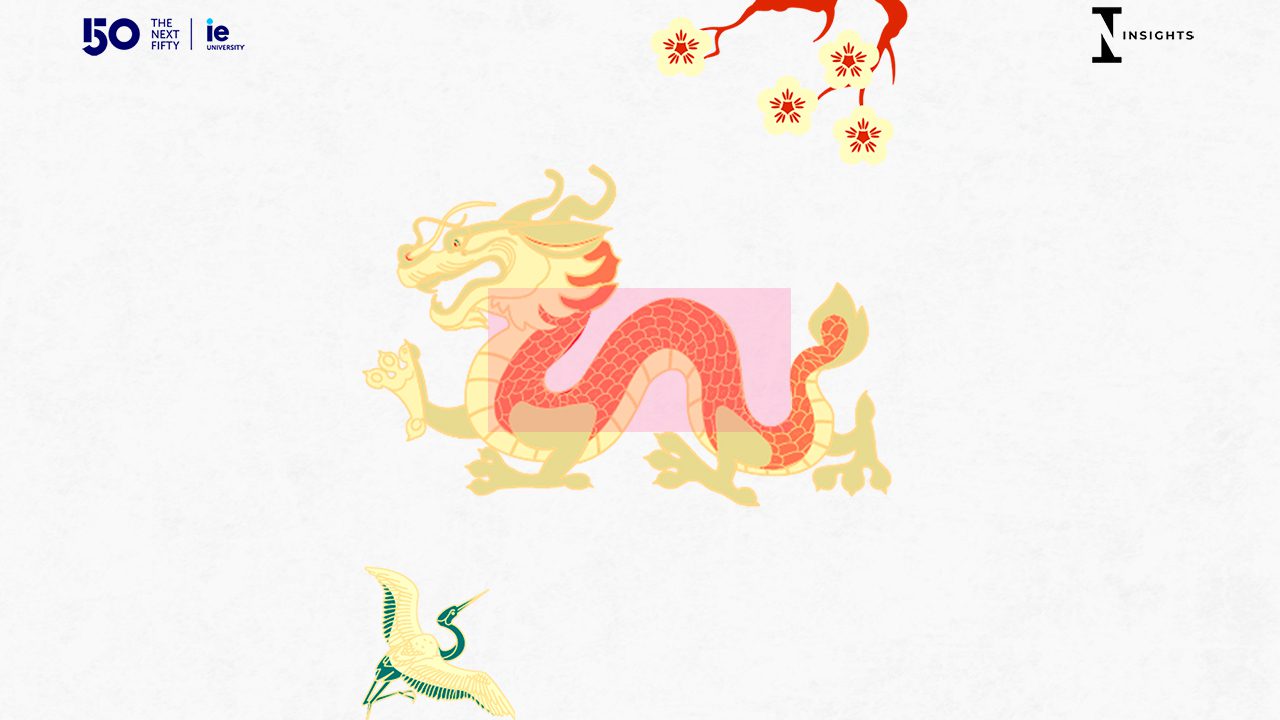Link copied
IE insights - IDEAS TO SHAPE THE FUTURE - Power

Where is China Headed in 50 Years?
The fate of the 21st century hangs on China's decisions in the next 50 years.
At the turn of the 20th century, the UK was the dominant global economic force. But underneath that veneer, the US had already displaced the UK as the world’s largest trading nation and Germany raced to rival its naval dominance. The subsequent 50 years brought a US-led global order, a flourishing Western democracy, and modern-day global trade and technology. The world is undergoing profound shifts again – the historical parallel is astounding – as China unseated the US as the world’s largest trading nation, creditor nation, and in owning the world’s largest naval fleet.
The 21st century will chart a course no less dramatic, with US-China relations a central nexus. In 50 years – marking three-quarters of the 21st century – where will China be?
Economy. China faces mounting debt burden, shrinking demographics, and restricted access to technology. However, by implementing prudent and pro-growth policies, China should still have the capacity to deliver a mid-4% range growth over the coming decades and – assuming the US continues to grow at 3% – will become the world’s largest economy. China may succumb, however, to its fiscal and financial crisis, deflate its asset bubble, and lose its manufacturing dominance on account of demographics. If China enters into “Japanization,” the global economic order could see an entirely other dramatic shift over the next 50 years, with the US remaining the preeminent global economic leader, India ascending as the second-largest economy, and China as the third most powerful (while remaining a significant force in global innovation, high-end production, and talent creation.)
Politics. In 50 years, the Chinese political landscape will be the most unpredictable, given the inherent uncertainty of authoritarian rule. Today, the Party exercises absolute control over economy, society, and culture. No convincing evidence supports the argument that China will converge with Western liberal democracy, but it is plausible that the general direction of China’s political climate will lean towards more freedom and openness, with more free press, free speech, free thinking in education and innovation, and more freedom in religion and the arts. Even without universal suffrage, China could empower a reasonable degree of public contestation, development of civil society, check and balance on the government’s accountability, and the rule of law, which would usher in another era of economic renaissance. Yet, if China’s political system were to be dramatically altered, it would open even wider possibilities.
Military. China’s Military Modernization Plan outlines that, by 2050, its military will be top-tier in the world and, given its drive to narrow the gap with the US, Chinese defense spending could be at parity with its superpower rival in as little as 20 years. This military expansion is closely associated with China’s now-widened global interests. With multi-trillion-dollar infrastructure investments across the developing world, immobile and vulnerable to political upheavals, China needs diplomatic and security capabilities to safeguard its overseas assets, personnel, and interests. In 50 years, we will likely see Chinese military in ports on the Indian Ocean, the East coast of the Atlantic Ocean, and the South Pacific Islands – not to mention its planned Moon base which will turn China into a formidable space power.
Global Influence. In China’s economic ascent, it first served as the exporter of cheap labor and now also exports technology, knowledge, and industrial supply chains. While China’s domestic economic well-being will be a constraint, China will inevitably continue on this path exporting technology, capital, infrastructure development, and industrial capacity to Africa, the Middle East, ASEAN, and Latin America and, in exchange, remain the largest importer of resources, food, energy, and a growing importer of primary and intermediary industrial goods from the developing world. Over the next 50 years, the Global South will witness a faster speed of growth compared to the Global North. China sees itself as a leader and a designer of an alternative rules-based multilateral order parallel to the Bretton Woods Institutions and will therefore continue to develop multilateral frameworks in the region in addition to its current prominence in the Shanghai Cooperation Organization, the Asian Infrastructure Investment Bank and the New Development Bank, and BRICS.
There are, of course, contingencies and uncertainties. Chinese Communist Party’s “core of the core interests” is Taiwan. The issue is in countdown mode, with the Chinese leader proclaiming national unification cannot wait for the next generation. In the next 50 years, according to the Chinese timetable and calculus, Taiwan unification would have long been completed (despite its actual outcome). There are two means for China to achieve this: peaceful and military. China has placed both on the table.
There hangs China’s destiny and the fate of the 21st century, between peace and war. The latter would quickly escalate on a global scale and deem all the previous and, indeed, all empirical predictions invalid.
© IE Insights.
